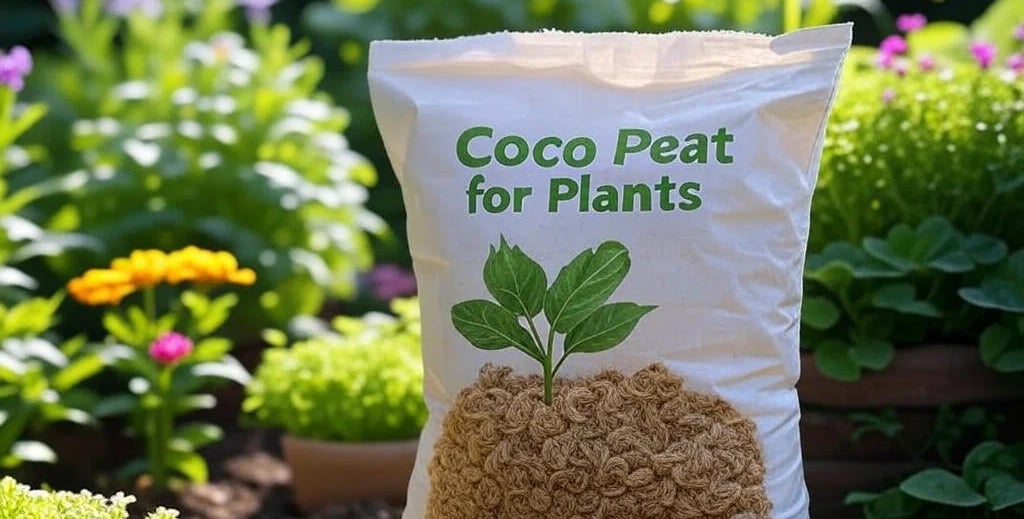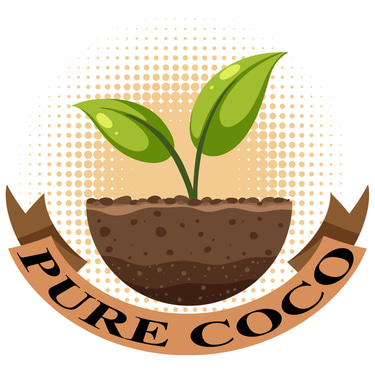coco peat benefits 7 Benefits of Coco Peat for Your Garden in 2025
coco peat benefits Discover the 7 remarkable benefits of coco peat that will transform your gardening experience in 2025. Learn how coco peat enhances soil quality, retains moisture, and promotes healthier plants for your garden.
6/13/20254 min read


Introduction to Coco Peat
Coco peat, often referred to as coir pith, is an organic material derived from the fibrous husks of coconuts. It is a renewable resource, making it an environmentally friendly alternative to traditional peat moss harvested from bogs. The production of coco peat involves the processing of coconut husks, a byproduct that would otherwise go to waste, thereby promoting sustainability within the gardening community. With the global shift towards eco-conscious practices, coco peat has gained traction amongst gardeners looking for sustainable solutions to enhance soil health.
Originating primarily from countries with large coconut plantations, such as India, Sri Lanka, and the Philippines, coco peat is produced during the extraction of coir fibers used in products like ropes and mats. This natural medium has garnered significant interest due to its exceptional properties, such as high water retention capacity and excellent aeration, which are essential for healthy plant growth. Its adoption has been particularly noticeable in horticulture and hydroponics, where it serves as an organic substrate, supporting plant roots while ensuring optimal drainage and aeration.
The increasing popularity of coco peat as a gardening medium can be attributed to its versatility, allowing it to be used in various applications, from potting mixes to landscaping. This material not only enriches soil but also helps in moisture retention, reducing the frequency of watering, which is beneficial in regions facing water scarcity. The lightweight nature of coco peat eases transportation and handling, making it an attractive choice for both amateur and professional gardeners alike. As we delve deeper into its remarkable benefits, it becomes clear that coco peat is poised to transform gardening practices in 2025 and beyond.
Improved Soil Structure and Aeration
Coco peat, derived from the fibrous husk of coconuts, has gained popularity among gardeners and horticulturists due to its remarkable contribution to improved soil structure and aeration. With its unique fluffy texture and high porosity, coco peat serves as an exceptional organic amendment that enhances the physical properties of soil. One of the standout features of coco peat is its ability to retain moisture while allowing for optimal airflow, creating a favorable environment for plant roots to thrive.
The porous nature of coco peat promotes excellent drainage, preventing waterlogging that can adversely affect root health. This enhanced drainage capability is particularly significant for gardeners in regions prone to heavy rainfall or overwatering, as it reduces the risk of root rot and other moisture-related issues. Moreover, the air pockets created by coco peat facilitate essential gas exchange within the soil, ensuring that roots receive adequate oxygen, which is crucial for their development.
Such improved aeration not only fosters robust root growth but also contributes to overall plant health. Roots that can breathe more effectively are better equipped to absorb water and nutrients, resulting in stronger, more resilient plants. Ultimately, this leads to healthier gardens and improved yields for both ornamental and edible plants. The use of coco peat can be a game-changer for any gardener looking to enhance the soil profile of their garden in 2025. By incorporating coco peat into their gardening practices, they can experience significant improvements in soil structure, aeration, and, consequently, plant health.
Water Retention and Management
Coco peat, a natural product derived from coconut husks, is increasingly recognized for its remarkable water retention capabilities. This organic material can absorb and hold substantial amounts of water, making it an invaluable resource for gardeners aiming to improve their irrigation practices. The hydrophilic properties of coco peat allow it to retain moisture effectively, enabling plants to access water as needed while reducing the necessity for frequent watering sessions. This is particularly beneficial for regions experiencing fluctuating rainfall patterns or prolonged dry spells, where moisture management becomes crucial for plant survival.
Furthermore, the enhanced water retention property of coco peat significantly minimizes issues related to water runoff and soil erosion. Traditional gardening methods often result in water running off before it can effectively penetrate the soil or reach plant roots. In contrast, incorporating coco peat into gardening systems enables soil to absorb water more efficiently, thereby minimizing the loss of precious resources. This characteristic not only facilitates healthy plant growth but also plays a role in maintaining soil structure and nutrient availability over time.
The water retention abilities of coco peat make it especially relevant in the context of sustainable gardening practices. In an era where drought conditions are becoming increasingly common, utilizing coco peat in soil mixes can dramatically improve a garden's resilience against water scarcity. By fostering a more consistent moisture level, coco peat enhances plant health and vigor while reducing the environmental impact of excessive watering. Consequently, incorporating coco peat into gardening routines aligns with both ecological principles and the practical needs of cultivating thriving, sustainable gardens.
Nutrient-Rich Growth Medium
Coco peat, derived from the fibrous husk of coconuts, has emerged as a popular growth medium in modern gardening practices. One of the standout features of coco peat is its ability to enhance nutrient retention within the soil. Unlike traditional soil, which can deplete nutrients over time, coco peat acts as a sponge, holding moisture and vital nutrients, thereby minimizing leaching and wastage. This characteristic is crucial for gardeners aiming to maintain fertile conditions for plant growth.
Additionally, coco peat contains natural plant growth hormones, such as auxins and cytokinins, which play a significant role in stimulating root development and overall plant health. These hormones encourage faster growth rates compared to other mediums, making coco peat an exceptional choice for those looking to cultivate a thriving garden. Moreover, when used in combination with fertilizers, coco peat improves the absorption of these nutrients, ensuring that plants have access to the essential elements they require for development.
When comparing coco peat to other gardening mediums like peat moss or soil mixes, the advantages become evident. Peat moss, while effective in retaining moisture, is not as sustainable and can contribute to environmental degradation. On the other hand, coco peat is a renewable resource, making it an environmentally friendly alternative. Furthermore, its pH-neutral nature allows for a more balanced nutrient availability, promoting healthier plant growth without the risk of toxicity often associated with overly acidic or alkaline soils.
Incorporating coco peat into your garden strategy in 2025 can transform the growth experience, fostering healthier, more resilient plants through its remarkable nutrient-retention capabilities and natural growth-enhancing properties. This shift toward using coco peat will not only benefit individual gardens but also encourage sustainable gardening practices for the future.
Pure Coco
Explore our range of coco peat products today.
Support
Contact
info@purecoco.com
+91-9015762289
© 2025. All rights reserved.
Support
